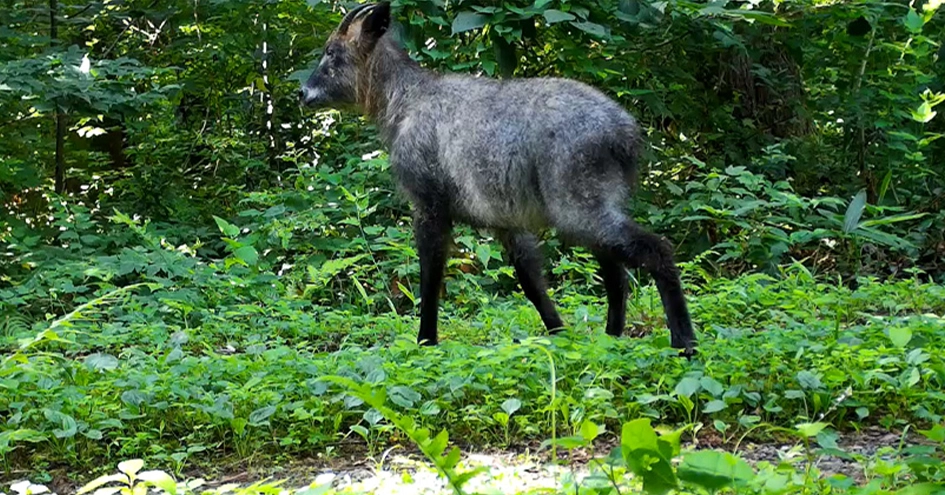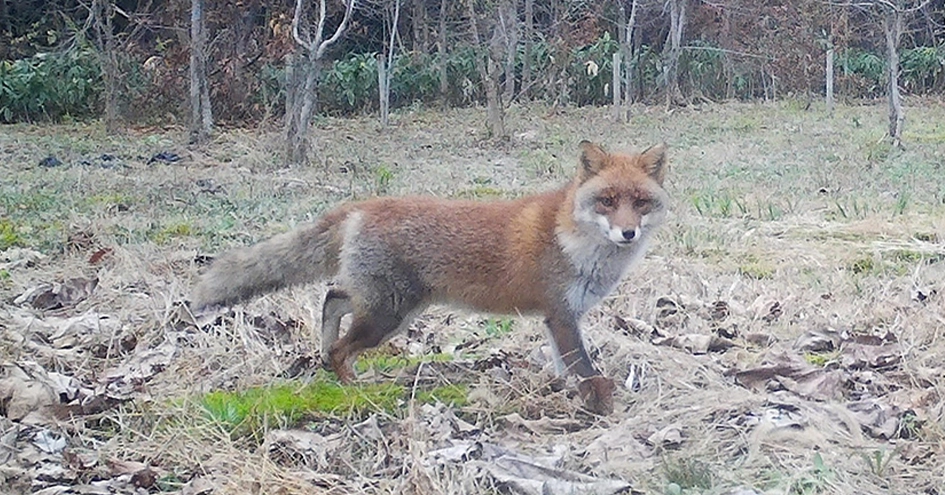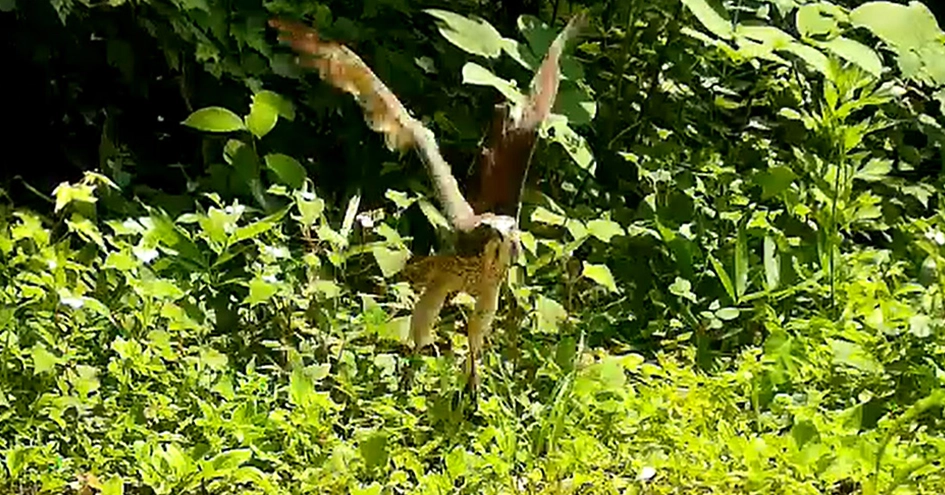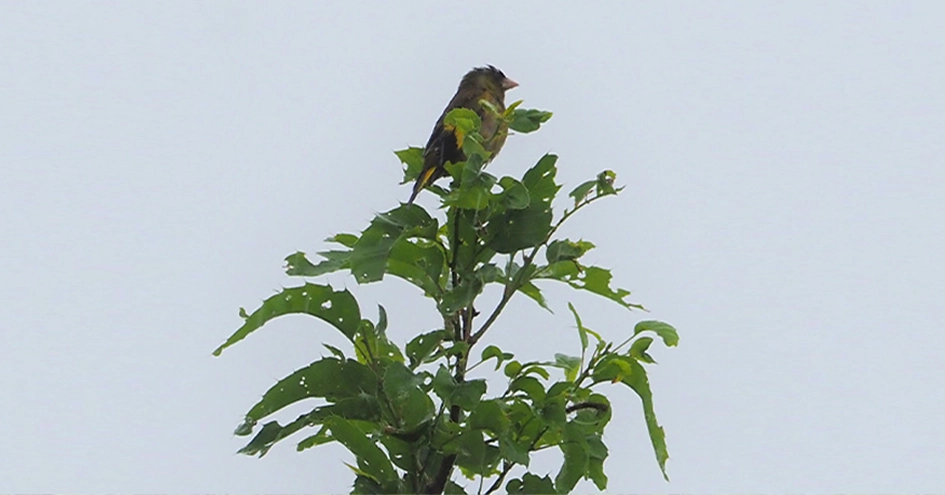Biodiversity Conservation
Recognizing biodiversity conservation as another significant global environmental issue, we have positioned this as one of our Key Tasks. We established and published our Policy and Commitments on Biodiversity Conservation in December 2022, following resolution by the Board of Directors.
Policy and Commitments on Biodiversity Conservation
Our Policy
We identify biodiversity related risks and opportunities in our businesses and actively promote initiatives for the conservation and sustainable use of biodiversity based on the mitigation hierarchy.
Commitments
- Identify Biodiversity Related Risks and Opportunities
- We will identify risks and opportunities for biodiversity in our business and promote initiatives for sustainable use.
- We will promote disclosure of information on biodiversity conservation activities.
- Set Exclusion Zones for Our Businesses
- We will not operate our businesses inside UNESCO World Natural Heritage site boundaries.
- Promote a Net Positive Approach
- For our businesses located in critical habitats1, we will develop and implement Biodiversity Action Plans (BAP), including creating net positive impacts.
- Enhance Biodiversity Conservation Activities
- For new businesses, we will identify impacts on biodiversity and develop and implement measures to avoid or reduce impacts based on the mitigation hierarchy.
- For existing businesses, we will reduce negative impacts on biodiversity to the extent possible and promote initiatives to create positive impacts on biodiversity.
1 Areas of high biodiversity value as defined in IFC Performance Standard 6.
Identification of Risks and Opportunities Related to Biodiversity
Please refer to the special page on initiatives related to TNFD.
Avoidance and Mitigation of, and Compensation for, Impacts to Protected Areas
We have made a commitment in our Policy and Commitments on Biodiversity Conservation to “not operate our businesses inside UNESCO World Natural Heritage site boundaries.” We have confirmed that, as of December 31, 2023, none of our operator projects are operating in areas that we have defined as exclusion zones.
Furthermore, since FY2019, we have been enhancing our geographical information system (GIS) with information on protected areas obtained from the World Database on Protected Areas (WDPA2), and animal and plant species that fall under the International Union for Conservation of Nature (IUCN) Red List categories.
- Confirmation if our operator projects operate in any protected area
- Initial screening of potential impacts of new projects to protected areas
- Planning for biodiversity conservation activities in existing projects
2 World Database on Protected Areas (WDPA): Developed jointly by the United Nations Environment Programme (UNEP)
Promotion of a Net Positive Approach
To better understand the present situation of our nature-related efforts and identify further necessary actions, we have utilized the World Business Council for Sustainable Development (WBCSD) practitioner’s guide: “What does nature-positive mean for business?” published by the WBCSD for practitioners in 2021. Using the guide, we have identified areas in which we are making particular progress. These areas include developing and issuing our commitments on biodiversity and water, and applying a mitigation hierarchy to avoid, mitigate, and compensate for our impacts on biodiversity. In the future, we will consider nature-related impacts and dependences in terms of the value chain and implement initiatives that contribute to net positive impacts.
Promotion of Biodiversity Conservation Activities
The type and degree of impact that our operations have on biodiversity differ depending on the scale, activities, or location of each project. Accordingly, the biodiversity conservation efforts required for each project also differ. Therefore, we assess the importance of biodiversity in the areas in which we operate, and the risks and impacts on biodiversity that each project brings. We then apply a mitigation hierarchy to plan strategies for avoiding, mitigating, and compensating for those risks and impacts, and to conserve biodiversity, in environmentally sensitive areas that are particularly important (protected areas, critical habitats of threatened species, forests, mangroves, coral reefs, wetlands, and tidal flats, etc.).
For many years, we have been conducting activities that contribute to biodiversity conservation at our domestic and overseas sites. We will continue to enhance our biodiversity conservation activities Group-wide based on our Policy and Commitments on Biodiversity Conservation established and published in December 2022.
Overseas Activities to Conserve Biodiversity
The Ichthys LNG onshore processing plant is located in Darwin Harbour, where extensive mangrove forests along the coast provide breeding and feeding grounds for fish and sea turtles. To protect this rich biodiversity, Ichthys LNG has continued to comprehensively monitor effluent quality, seawater quality, and growing conditions for mangrove forests, and other natural vegetation in Darwin Harbour even after it began operation. We further contribute to biodiversity conservation around the plant by providing grants to marine research projects such as dugong studies in the Northern Territory.
More on this in the Cardno report: “Darwin Harbour – A Summary of the Ichthys LNG Project Nearshore Environmental Monitoring Program” (see page 98)
For the Abadi LNG Project in Indonesia, we surveyed the distribution of coral reefs in the sea area surrounding the project site using satellite image analysis in 2021 as part of the Environmental and Social Impact Assessment process (AMDAL). We also conducted a coral reef survey by diving in the sea area in front of the project site in November 2023. Using the results of these surveys, we are conducting an impact assessment and planning to formulate and implement measures to reduce the impact on coral reefs in the future based on the mitigation hierarchy.

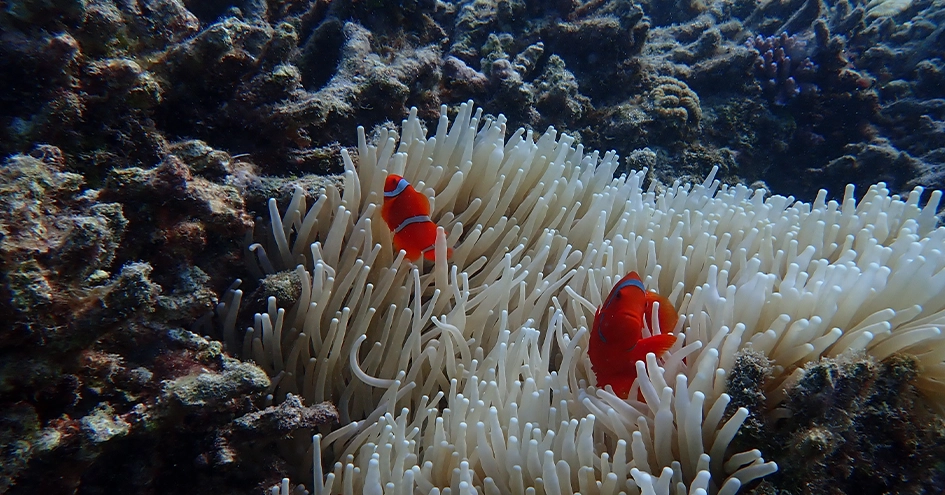
PTTEP—Joint Workshop on Biodiversity with PETRONAS
In October 2023, PTTEP (Thailand), PETRONAS (Malaysia), and INPEX held a joint workshop on biodiversity and ecosystem services at PTTEP’s head office in Bangkok. About 100 participants attended the workshop, including environmental and sustainability experts from the three companies, along with representatives from Thailand’s ministry of environment, university professors, consulting firms, and other organizations.
At this workshop, we presented the results of a trial evaluation based on TNFD’s LEAP approach that we conducted in our domestic operations in FY2023. When we shared the issues identified in this trial, we received several questions and comments from the participants, serving as a catalyst for constructive discussions among the participants.
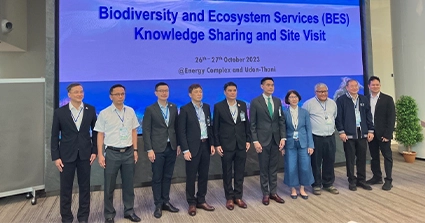
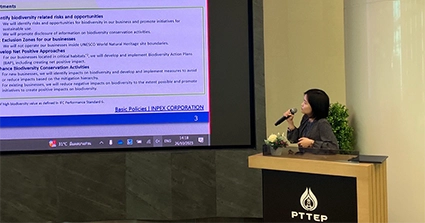
Wild Bird Surveys at the Onshore Block 4 Project
JODCO Exploration Limited (JEL) has been involved in exploration activities since FY 2019, after acquiring Onshore Block 4 in Abu Dhabi, United Arab Emirates (UAE). From 2021 to 2022, JEL conducted drilling operations on Balghelam Island and Umm Al Barak Island, located approximately 20km northeast of Abu Dhabi. These islands are known as important sites for migratory birds. Therefore, JEL engaged external experts to conduct bird surveys with the aim of assessing the current status of bird species on the islands and considering mitigation measures for affected bird species prior to project implementation. The survey recorded the types of birds, population numbers, and behaviors (nesting, feeding, breeding) in each area, providing an overview of the bird ecology on the islands. Based on the survey results, measures were implemented during project implementation to consider the impact on birds, including the evaluation of the location and arrangement of project-related facilities, restrictions on access areas for personnel and vehicles (limiting access to nesting areas and areas away from access roads), and other measures. Currently, ongoing monitoring surveys are being conducted multiple times a year to assess the post-project impact and obtain baseline data for future development.
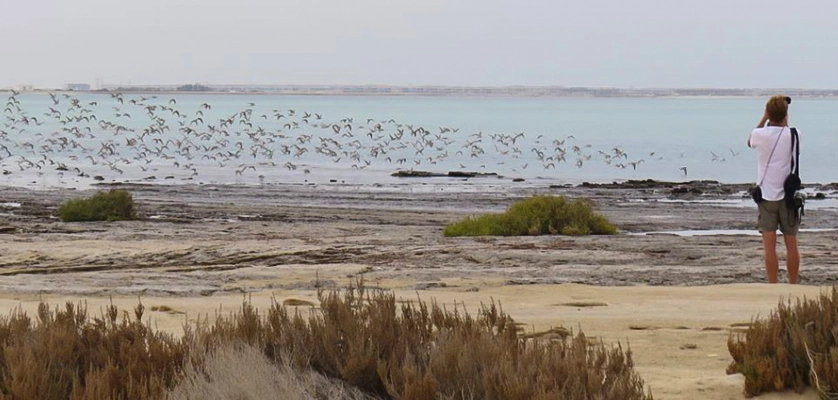
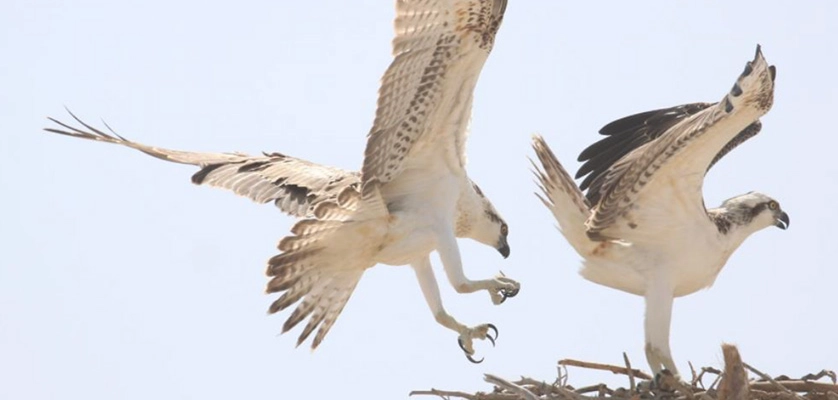
Activities to Conserve Biodiversity in Japan
Understanding the Characteristics of Environments around Domestic Offices
In FY2021, we conducted desktop reviews to understand the characteristics of environments around domestic offices (rivers, fishing grounds/farms, forests, biodiversity conservation areas, cultural properties, natural monuments, and critical habitats of threatened species). We then compiled this information using a geographic information system (GIS). This not only enabled us to understand the ecosystems around our domestic offices, but to also understand environmentally sensitive areas around sites at the planning stage of new projects.
Biodiversity Conservation Activities in Japan (Efforts at “Kitsunedaira Donguri-no-mori”)
As part of an ongoing forestation support program launched by Niigata Prefecture in FY2010, the Kitsunedaira Donguri-no-mori (Acorn Forest) project is being conducted in Nagaoka City’s Fudosawa district, adjacent to the Nagaoka Field Office. In addition to this forestation efforts, since FY2019, we have been conducting biodiversity surveys in Kitsunedaira Donguri-no-mori to investigate the species that are using and inhabiting the forest. As a result of the surveys conducted in FY2019 and FY2022, a wide variety of species have been observed, including antelopes and foxes.
We plan to continue our biodiversity conservation activities at Kitsunedaira Donguri no-mori in the future. In FY2024, we also plan to conduct additional surveys using environmental DNA analysis in addition to the current survey methods.
Kitsunedaira Donguri-no-mori forestation activities
- As part of an ongoing forestation support program launched by Niigata Prefecture in FY2010, the Kitsunedaira Donguri-no-mori (Acorn Forest) project is being conducted.
- In addition to planting trees and caring for the forest, a pilot biodiversity survey was conducted in autumn of 2019.
- Due to the results of the autumn 2019 survey, a year-round survey was conducted in 2022.
- The results of this survey were shared with local residents in FY2023.

Planting Trees and Caring for The Forest
Twice a year, in spring and autumn, our employees work with local residents on forest maintenance, tree planting activities, and holding nature observation meetings for children. (This initiative has been suspended since 2020 due to COVID-19.)
FY2019 Biodiversity Survey (Autumn)
In autumn of 2019 (October–November), we conducted a simple survey to examine the state of Donguri-no-mori’s biodiversity. For the survey, we set up six sensor cameras to capture images of creatures living in the forest.We observed several species of mammals at the site, including Japanese serow, and several species of birds in and around the area.
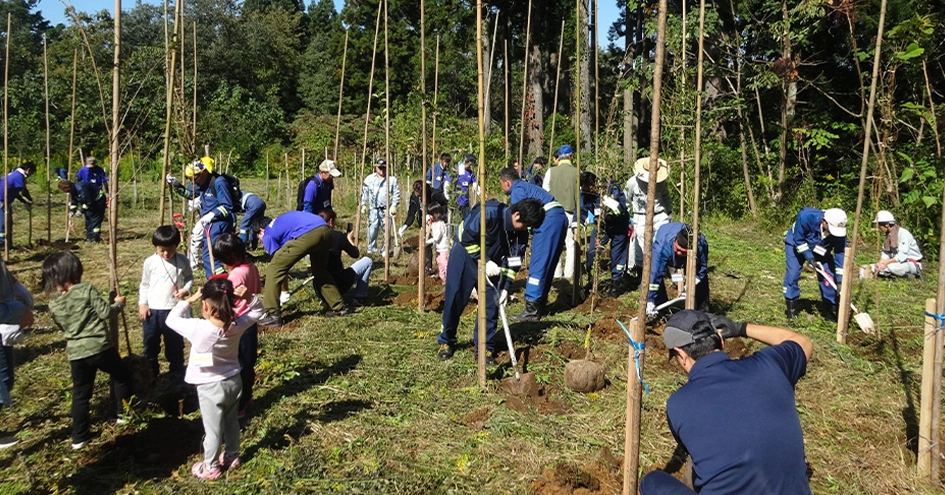
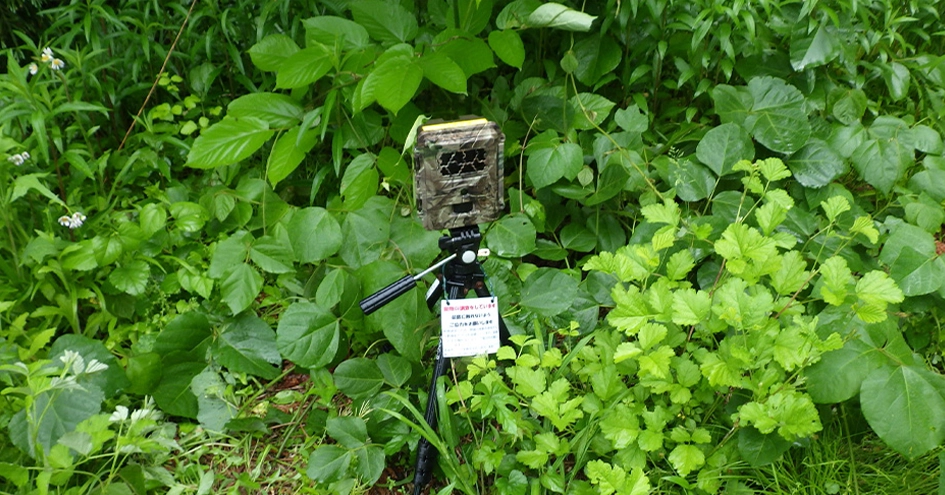
2022 Biodiversity Survey
Building on our observations from the 2019 survey, we conducted another survey in FY2022 to further understand the current state of biodiversity in Donguri-no-mori. Conducted over approximately an eight-month period between May and December 2022, we placed eight sensor cameras in the forest to capture images of creatures living there. A literature review was conducted alongside the field survey.
The survey confirmed the presence of gray-faced buzzards (birds) and foxes (mammals) at the apex of the Donguri-no-mori ecosystem. The survey also revealed a wide variety of creatures who habitat the forest throughout the year. It is not possible to obtain such a result from a single reclaimed environment created over a short time frame comprising only forests and grasslands. We understand this to be an overall improvement of species and ecosystem diversity as the result of 13 years of continuous care of the environment through ongoing forestation efforts (since FY2010). We also shared the results of the survey with local residents in FY2023. We will continue to work with local residents to maintain and improve the biodiversity of the Donguri-no-mori.
